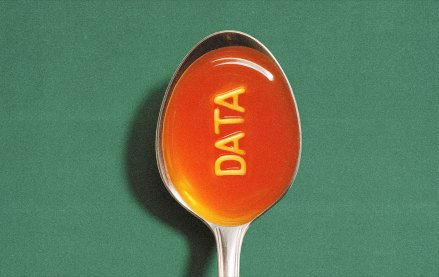Save 50% on a 3-month Digiday+ membership. Ends Dec 12.
‘A lot of the time it’s intuition’: Marketers continue to struggle with attribution in influencer campaigns
While identifying influencers and their audiences has become easier, tracking their business value can still be a challenge for many advertisers.
Some global advertisers are spending as much as a third of their digital budget on influencers but are still struggling to understand the real cost of promoting their brands this way. There are so many varying factors to take into account beyond a follower count now — like an influencer’s reach on social networks and their level of public profile, through to the production quality of their content, how in-demand they are — that it’s harder for advertisers to not only negotiate a fee with an influencer but to then see what reach and engagement that investment buys them.
“There’s a compounding value within the current prices of an influencer that a lot of brands take for granted when they look at payment models through a narrow lens that’s too similar to how they would buy a banner ad on a site,” said Lisa Targett, U.K. general manager at influencer marketing platform Tribe.
When Pernod Ricard’s Malibu brand first started to work with larger influencers five years ago the main metric was impressions. But understanding an online profile of an influencer as well as the brand uplift and engagement they can drive was more deemed a more realistic approach given how hard it is to attribute a footfall into a shop to an influencer marketing campaign. Now, there’s more focus on understanding the benchmarks and channel averages of the influencers the advertiser has chosen to work with, said Monica Jungbeck, global marketing manager at Malibu. That way, the influencers are set a clear set of KPIs for the campaign by Malibu marketers who in turn use a mix of qualitative and quantitative metrics to optimize their briefs based on the performance of those campaigns, said Jungbeck.
The approach is a variation on the cost per engagement metric more advertisers like Kellogg’s are exploring. Simply, the cost per engagement is how much the advertiser pays for every like or comment on a piece of content that features their brand. Aside from the production costs and a benchmark CPE within the advertiser’s category, both the objective of the campaign and whether the influencer will be paid based on estimated averages or post-campaign based on actual engagements will influence the fee.
“We’re thinking more about our expectations of an influencer,” said Jungbeck. “For a global influencer with around 200 million followers, we don’t expect the engagement rate to be more than 5%, whereas for smaller influencers we expect that rate to double.”
Not many advertisers are able to pay an influencer based on success such as fees linked to the engagement and reach of their content. In those instances, the alternative tends to be the tried-and-tested to pay influencers on a CPM deal. Part of the problem is that it’s not always easy to get influencers to report back the results of a campaign needed to switch to performance pricing if a contract hasn’t specified that’s what should happen.
“There is still a lot of talk about introducing mechanisms for payment by results, such as fees linked to engagement and reach of content. But actually, we don’t see that many deals put together on that basis,” said Jo Farmer, partner at Lewis Silkin, a law firm that oversees contracts between brands and influencers. “For those advertisers that do try to link fees to some form of “success” of the campaign, it’s really important to make sure you think about unethical practices, like bots, and other artificial ways to make it look like a post was more successful.”
At L’Oréal, the advertiser uses influencer marketing platform Traackr to reorganize the influencers promoting its brands around wherein the attribution funnel they sit. Over the last five years, the advertiser has used the platform to weigh up the performance of influencers in 15 markets with its own spend on gifts to those influencers with no strings attached. Having all that insight on how its spend on earned media drives the performance of its influencer campaign has given the business enough measurement to be able to activate certain influencers for reach and others for awareness, said a spokesperson for the brand.
“Increasingly, talent-led marketing is seen as a key component within the overall marketing mix, and is, therefore, playing a central role in brands’ strategies,” said Chris Davis, head of brand partnerships at talent agency Gleam Futures. “Brands are recognizing that talent partnerships, when done in the right way, are a legitimate way of reaching and engaging with diverse audiences, and driving real impact.”
More in Media

Meta enters AI licensing fray, striking deals with People Inc., USA Today Co. and more
The platform has secured seven multi-year deals with publishers including CNN, Fox News, People Inc., USA Today Co to incorporate their content into its large language model (LLM) Llama.

European publishers say the Digital Omnibus ‘cookie fix’ leaves them worse off
The European Union’s attempt at a legislative spring clean for Europe’s web of data privacy rules, has landed flat with publishers.

Digiday+ Research Subscription Index 2025: Subscription strategies from Bloomberg, The New York Times, Vox and others
Digiday’s third annual Subscription Index examines and measures publishers’ subscription strategies to identify common approaches and key tactics among Bloomberg, The New York Times, Vox and others.








